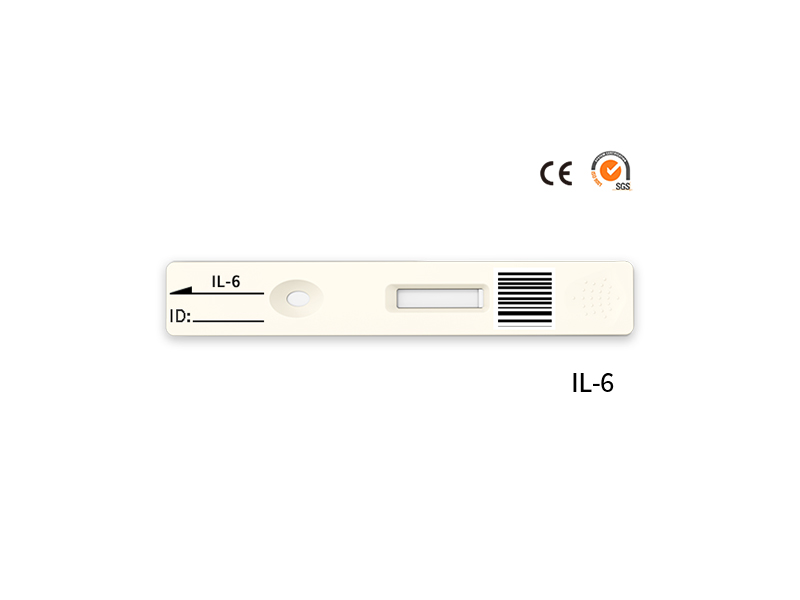Product Specification
|
Specimen Types |
Plasma/Serum |
|
Specimen Capacity |
50μL |
|
Reaction Time |
15 min |
|
Sample Capacity |
80μL |
|
Detection Range |
5-1000pg/mL |
Advantages
The window period is earlier than CRP, can reflect the infection quickly;The half-life is shorter than CRP and PCT, It can timely assess the effectiveness of the drug, and suggest lowering the dose or stopping the drug to avoid overtreatment.
Clinical Significance
Interleukin-6 (IL-6) has important roles in both innate and adaptive immunity. As part of the innate immune system, IL-6 acts on hepatocytes to induce expression of C-reactive protein (CRP), fibrinogen, and serum amyloid A, also known as the acute phase response.
Concentrations of IL-6 are elevated in patients with infection, sepsis, and septicemia. In addition, IL-6 concentrations appear to correlate with severity of sepsis, as defined by clinical and laboratory parameters. Elevations in IL-6 also appear to be associated with more localized infections, such as prosthetic joint infections (PJI).A recent meta-analysis demonstrated that IL-6 had improved diagnostic accuracy for PJI compared to CRP, erythrocyte sedimentation rate (ESR), and white blood cell counts. IL-6 is also elevated in numerous chronic inflammatory disorders, including rheumatoid arthritis (RA), systemic lupus erythematosus (SLE), ankylosing spondylitis (AS), and inflammatory bowel disease (IBD). There is evidence that IL-6 is involved in the pathogenesis of certain chronic inflammatory disorders. Tocilizumab, an antibody that blocks IL-6 function by binding to the IL-6 receptor, has been approved for the treatment of RA. In a randomized trial, 50% to 60% of patients receiving tocilizumab and methotrexate showed improvement in clinical signs and symptoms of RA, compared to only 25% in patients receiving methotrexate alone.




 Gold supplier
Gold supplier








 Facebook
Facebook  Twitter
Twitter  Linkedin
Linkedin  YouTube
YouTube  Blogger
Blogger  Instagram
Instagram 
















